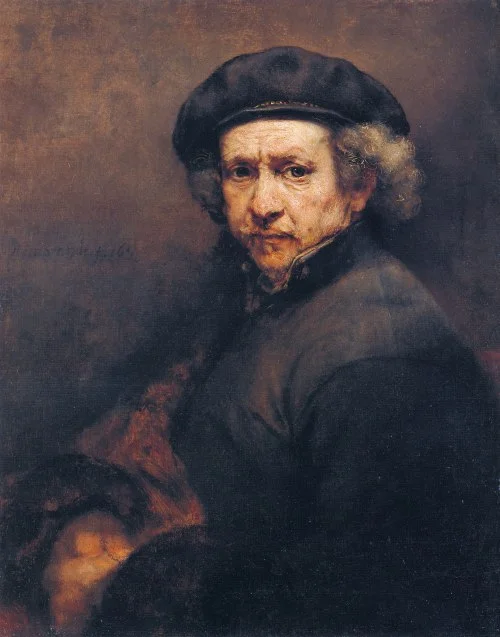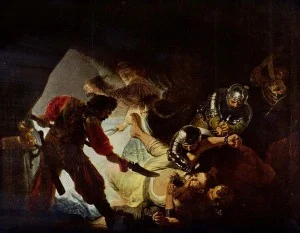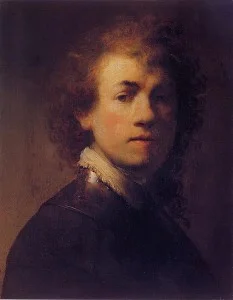Rembrandt Harmensz van Rijn Biography (Leiden 1606 to Amsterdam 1669)
Rembrandt Harmensz van Rijn was a 17th Century Dutch artist known for his oil paintings, drawings and etchings. His interests in ancient sculpture, Flemish and Italian Renaissance paintings, Far Eastern art and contemporary Dutch works helped lead to his success, in which he had an assortment of antiquities such as weapons and armory that he used as props for his compositions. He was also known as a master of the period of artistic style called Baroque. He is generally considered one of the greatest painters and etchers in European history, and the greatest in Dutch.
Rembrandt’s artistic contributions came in a period of great wealth and culture known to historians as the Dutch Golden Age. He is known for being an extremely prolific and innovative artist, largely adapting the technique known as chiaroscuro. This is an art form that, in eneral, has come to mean the interplay of light and shadow on a surface. With this distinct style, he made great use of the arrangement and treatment of light and dark parts of his pictorial works to create mood and character.

Rembrandt Self Portrait with Beret and Turned-Up Collar, 1659
As a well-known Baroque-style painter, he mastered this technique that uses exaggerated motion and easily interpreted detail to produce drama and tension in his artwork. Baroque artistry began in Italy and spread through Europe in the early 1600s, and was heavily promoted by the Roman Catholic Church.
There is debate, however, whether Rembrandt’s particular style of painting was influenced by the well-known Italian Painter Michelangelo Merisi da Caravaggio (1571 to 1610). Caravaggio was also an innovator in chiaroscuro with his use of shadow and light, and also for his use of dramatic lighting in his artworks that had a formative influence on the Baroque school of painting. Rembrandt saw Caravaggio’s paintings during a time when they were on display in Amsterdam.
Having achieved recognition for his artistry by the early age of 22, Rembrandt was already known as a great painter. Beginning in 1629, he had pupils studying under him, of which two of those later became well-known Dutch Golden Age artists as well. One was Gerrit Dou (1613 to 1675), and the other was Isaac de Jouderville (1612 to 1645), who later traveled with Rembrandt to Amsterdam in 1631.
Rembrandt enjoyed painting historical, mythological and religious works, which were in great demand. Also notable were his subject matters that were often dramatic and lively, and more fluid as opposed to the rigid formality of his contemporaries. His immediate family were often models in his paintings.

The Blinding of Samson, 1636
Among the many works of this kind is his masterpiece The Blinding of Samson that he painted in 1636. He also liked to produce etchings that he began doing at around the age of 20. He was interested in its technique and effects, and over his lifetime created more than 300 pictures.
But it was his portrait paintings that often earned him much notoriety and attention. He especially loved to paint portraits of his family and friends, of wealthy patrons and many of himself. His artwork, mainly his paintings, were so compelling that some of the most renowned artists in history were influenced by them, including Goya, Whistler, Chagall and Picasso.

Rembrandt self-portrait, 1629, (Germanisches National Museum, Nuremberg)
While Rembrandt was a successful artist at a very young age and remained so throughout his life, his personal life was marked with tragedies and financial hardships. He survived the death of his wife and several children, and he often blew his money by spending more than he could afford and by making bad business deals. These resulted in him moving in and out of his parents’ home throughout much of his life when he otherwise could have afforded not to, and to file for bankruptcy on two occasions.